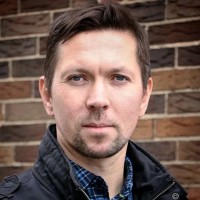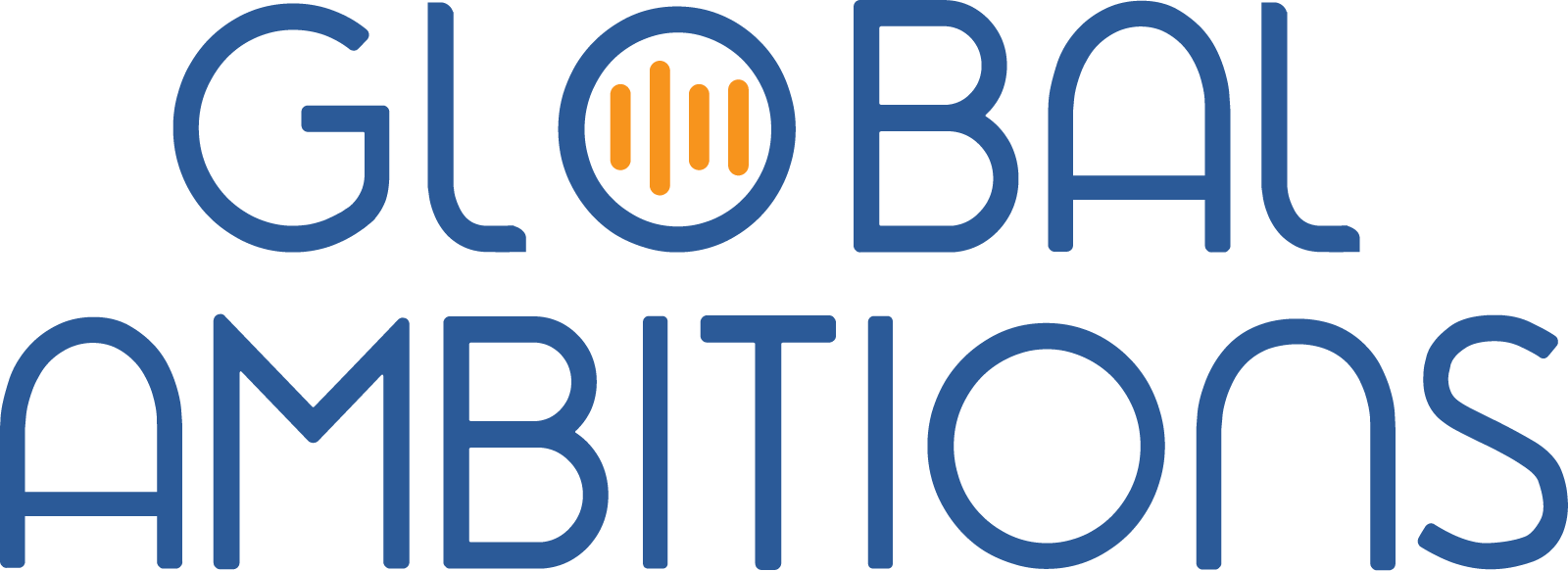With Oleksandr Pysaryuk, Localization Professional
Below is a full transcript of this episode.
Antoine Rey
I’m Antoine Rey and I’ll be your host today for this Global Ambitions episode. My guest today is Oleksandr Pysaryuk head of localization at Ceridian, where he also manages the internationalization development team for the company. And today our topic is going to be around globalization strategy on the client-side. Welcome to the program.
Oleksandr Pysaryuk
Happy to be here, Antoine.
Antoine Rey
Great. So let me dive straight into it here. You’ve been working with Ceridian for three years, and if I remember well, when you join a company like this on the client-side, in the organizational discovery phase you’re probably trying to map what the gaps are and what you’re going to put your roadmap on for the next few years. Is that something you can talk to our listeners about?
Oleksandr Pysaryuk
Oh, absolutely. You’re right. I joined three years ago to inherit localization. In a certain way it was run all right. However, there was no established localization, function or department or a manager or any team, and a big organizational discovery was long overdue. Absolutely correct. So I had to step in and I did conduct what I called an org discovery. Which in reality is a series of interviews with any stakeholders in any organization that I could reach that was owning, producing, translating strategic content that Ceridian had.
As well as I conducted interviews with product management, leadership development, software development leadership to see what localization means to them. Do they even use this as a word? What’s internationalization? How is product developed? How are products developed? How have they been historically localized? What were the gaps? What were the common customer complaints, et cetera? It was a journey of six-plus months worth of nonstop meetings and interviews.
Antoine Rey
Very good. Yeah, I think this is something that I see as a common thread across all the people that I’ve been talking to on the client-side, where really there is that approach to having to reach out to all the various stakeholders. And so maybe can you talk a little bit more about this because a lot of people don’t realize how much you have to go and evangelize yourself and new service group and meet with the right people? And that might take a while. You might make some mistakes as well. Not necessarily going to the people of influence, but are there a kind of at least a category of people that you need to have in your sphere of influence, you know, over time?
Oleksandr Pysaryuk
Leadership in any org is your partner, first of all, to develop your sphere of influence. I report into P&T or product and technology organization. In other words, it’s developers and product managers and everything that goes into that. So my stakeholders would be any VP leader of any engineering or product leadership, as well as non-product and technology leadership in organizations like Marketing, who owns content but hasn’t localized much or has made some forays into translation services. Professional services, e-learning, finance, you name it.
It’s not easy to just open the door and approach them from the get-go. But it takes a while to build that relationship. So there are mistakes like you’re saying, but there are also pushback and all the things you can imagine in a normal enterprise flow of work.
Antoine Rey
So working with that sphere of influence when you reach out to all those different functions and people, and I like the fact that you go into finance because I always tell a lot of people that I talk to, to follow the money. Somehow that will get you anywhere when you’re talking to that sphere of influence. Is that how you’re starting to map the localization roadmap for your organization? Because while you are having those conversations, I presume you have to build the infrastructure to deliver the services that you’re looking at delivering for the organization, right?
Oleksandr Pysaryuk
Right. A conversation is never enough. It has to be a series of conversations. It has to have outcomes. My outcome specifically was a broad so-called localization canvas. A series of charts, slides or a single slide that you build with information that supports your mandate to support your mission based on interviews you’ve conducted . In my case, it turned out to be a canvas of six major areas of “normal” enterprise organization functions that have to be present.
And I’ll name them. They are internationalization development, a.k.a. product readiness, localization solutions, internal quality management, program management, localization technology, partnerships with LSPs. In your case, it may vary, but that’s what ended up being on my canvas. And those were the areas where we identified gaps, translated them into opportunities, and started chipping away at every one of them in order of priority.
Antoine Rey
OK, yeah, that makes a lot of sense. And I like those six areas and I’m sure that’s going to be useful. So when you join an organization like this, do you feel that the stakeholders that you’re going to have to work with were waiting for you like the messiah and can’t wait to send you files for localization and take that off their plate because it’s a pain for them? Or do you actually have to go and earn a mandate with all the different people to take over localization with those different groups?
Oleksandr Pysaryuk
It is both. In times when I see opportunities to go and earn the mandate. I definitely was at it to start the conversations and start earning it. However, like you asked in the first part of your question, people were waiting for this role. It was long overdue. As an example, I was indeed pulled out of the first day of my training and onboarding into offices of VIPs to start discussing localization. But it wasn’t about translating files or strings or building a TMS. That language wasn’t even a language in the organization.
It was about solving specific complaints or issues or requests that customers had for features of mature global enterprise software. Product features ranging from simple, seemingly simple things like data formats don’t look right in Germany. Fix that because you’re a localization person. Or that an enterprise customer wants to make our software look right to them by changing the terminology that makes sense in their context. Which is a feature of some enterprise products. I will name one Salesforce, where you can change terminology within the UI globally as a customer. Naming your leads, your opportunities or naming your employees associates.
Antoine Rey
Mm-Hmm.
Oleksandr Pysaryuk
That’s very complex infrastructure that lies behind that kind of a future. So you don’t just solve that with translation immediately. On my first weeks at Ceridian I was pulled into conversations as complex and even more complex than that.
Antoine Rey
Thrown into the deep end right away. And so in that case, do you start saying yes to everyone or do you have to push back?
Oleksandr Pysaryuk
You have to push back. You have to start saying “yes, however”, or “No. but here’s a plan.” You can’t just outright say no. Yeah, I had to assume the role of internationalization product manager. And, you know, product managers often say no. Quite a bit. They have a vision. They say yes to things that are necessary. They say no to things that are not necessary or that can be put on the roadmap long term or short term. And that’s exactly how I had approached, or a typical product role would be, handling internationalization. You can’t do all things at once. It’s a journey. It has to be mapped on a roadmap on a timeline. It has to be prioritized, communicated, bought into by stakeholders.
Antoine Rey
And so an interesting point that you mentioned there, because you’re kind of building the engine or changing the engine while you’re flying 20000 miles in the air. How do you then… in parallel to that would you need to align to certain corporate objectives that the company has in a long-term vision?
Oleksandr Pysaryuk
I guess you’re right. We did align our activities, anything we do in localization with growth levers of the enterprise or corporate objectives. We created a vision statement, mission statement. We put it on visuals. We communicated that there was a roadmap, higher level, lower level timeline priorities within that roadmap.
Antoine Rey
So in this case, do you find opportunities to communicate those like they’re all-hands meetings where you can share that vision that you align to corporate objectives because that’s not going only to your localization team? I presume you’re sharing this at a high level, right?
Oleksandr Pysaryuk
At all levels, really. All hands or local and meeting more local meetings than global all hands. A good example, I’ll go by. An example is, let’s say, a biweekly meeting of managers and directors of an R&D organization. You’re always there as a manager to give an update with a CTO in the room as an example on how localization is faring. Of course, that was the opportunity to present the vision and the mission in any slides or any updates.
We went even further. We had stickers of all things. Our team created a mascot. Branding yourself like that. Yeah, we branded ourselves. We called it a global bot. It had Ceridian style and logos on it. We printed it on stickers. We were giving it out at manager and director level meetings. It put smiles on people’s faces when you say, Hey, do you want a sticker? Do you have a sticker lover in your home who wants a sticker? But it made so much sense. I saw stickers around on VP’s laptops. People are coming to my desk or my team’s desks to grab a sticker and to start a conversation about localization and what we do.
Antoine Rey
That’s a great way for people to remember your team and the services that you offer. I’ve seen that at a number of companies where they do T-shirts or teddies or stickers is the one it’s great and even brand yourself with an acronym for your team, for instance. So if we reflect on the last three years and now you’re three years later, are you as a team consulted by various parts of the organization in the go-to-market strategy?
Oleksandr Pysaryuk
We are a team of internationalization developers and program managers and myself. And the answer is yes, we are consulted in very many ways. The most tangible way is because we’re a team of developers who creates infrastructure layer for product readiness, the internationalization code refactoring and all that. All the regression risks that are going into that. We are consulted on those matters by various software development teams, teams that are acquired at other organizations who are onboarded onto our product development cycles consult us.
For the go-to-market. part of your question, yes, we are at the table as a workstream. As a globalization organization workstream where we are there for technical infrastructure support or if any content needs to be prioritized and translated that is owned by other orgs are the orgs are discovering us as a workstream who would support them with translation flows. So it’s the technical consultancy and translation operations consultancy.
Antoine Rey
OK, great. I see that you’ve gone a long way in the last three years and three years is a long time as well, but there’s always tons to do, and probably it takes more time than you initially imagined to put in the overall infrastructure in place and sell it and develop that global mindset. But we’re coming to the end of our session. And I’d like to thank you for participating in Global Ambitions. This is a great episode for our listeners. They will get a lot of information out of you. So thanks very much.
Oleksandr Pysaryuk
Thank you very much, Antoine. It was a privilege.

Oleksandr Pysaryuk
Localization Professional




